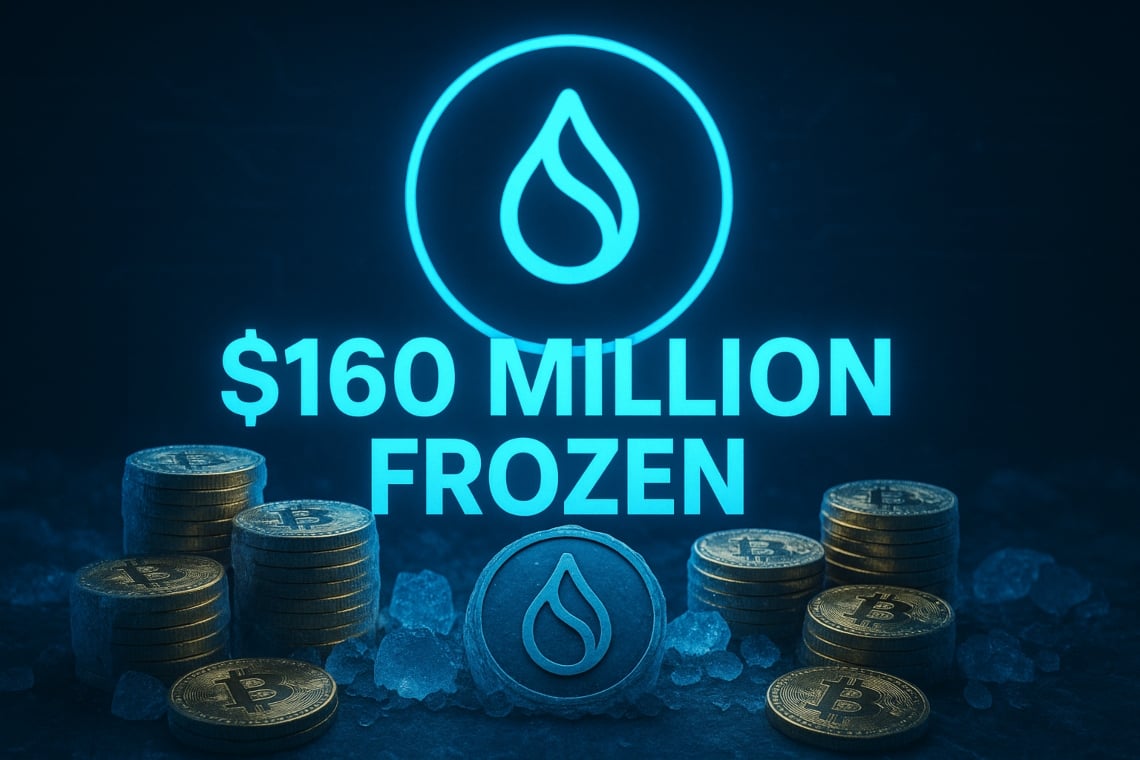The Sui Foundation has recently taken a decisive step in the fight against cyber attacks in the cryptocurrency world, successfully blocking 160 million dollars stolen following a hack.
Although the freezing of funds represents a technical victory, it has also raised crucial questions about decentralization and the future of the network Sui Network. Now, the community’s attention is entirely focused on the foundation: what will happen to these funds?
The possible paths for the unlock on Sui after the hack
Currently, the stolen funds have been blocked thanks to a mechanism called deny_list, which prevents any transaction from addresses associated with the hacker.
In practice, the validators of the network reject any operation involving these addresses, making the funds unusable.
However, this block is not permanent. There are several options to unlock the funds, each with very different technical, ethical, and political implications.
One of the most discussed options is the use of a whitelist, that is, a list of authorized transactions that can bypass security checks. This approach leverages the function `transaction_allow_list_skip_all_checks`, which allows completely ignoring the deny_list.
Although the relative proposal on GitHub has been closed, it remains the most likely solution. Another possibility is to perform a hard fork, which means directly modifying the protocol rules and the state of the blockchain.
This solution, already adopted by Ethereum after the attack on the DAO in 2016, involves enormous risks: it could split the network and compromise the immutability of the chain.
For a young blockchain like Sui, in an already saturated market, it would be a potentially self-destructive gamble.
The foundation might also decide to do nothing, keeping the funds locked forever. In this case, the total supply of SUI would accidentally decrease, creating a deflationary effect.
A choice that, although simple, could have long-term economic and narrative consequences.
Return Strategies: Between Governance and Reputation
One of the most “democratic” options involves an on-chain vote to decide whether to return the frozen funds proportionally to the victims. If the vote were to pass, the foundation could use the whitelist to carry out the transactions.
However, the centralized distribution of SUI tokens makes it likely that the foundation controls the outcome of the vote, turning democracy into a mere facade.
Alternatively, the foundation could proceed directly with the restitution, adding the transactions to the whitelist without any vote.
This approach, however, would strengthen the image of the foundation as a super-administrator, undermining the reputation of Sui as a decentralized network.
Another hypothesis involves a negotiation with the hacker to obtain a proportional return. However, since access to the funds has already been neutralized, any return would still have to go through the whitelist.
In essence, it would merely be a facade move, useful for masking a centralized operation.
A more ambitious proposal involves the transfer of funds to a neutral third party, followed by an approval process by regulatory bodies such as the SEC or the CFTC.
This approach could transform Sui into a model of regulatory compliance in the crypto world. However, it remains a centralized solution masked by legality, and it would not put an end to the debate on decentralization.
DeFi Compensation Fund
Another innovative strategy consists of creating a compensation fund based on smart contracts. The frozen funds would be transferred to this contract via whitelist, and the victims would receive gradual compensation over time, funded by the future revenues of the ecosystem.
This approach would transform the victims into stakeholder, potentially reducing public criticism. However, the complexity of implementation remains high.
Finally, a more cynical but potentially effective solution is that of temporal arbitrage: leaving the issue unresolved for a long period, accumulating SUI at low cost while the market loses confidence, and then suddenly announcing a total return.
A move that would exploit time as a strategic lever, justified by alleged technical or regulatory difficulties.
All the options described above have one thing in common: they challenge the fundamental principle of decentralization.
Any intervention by the foundation through whitelist or hard fork implies a degree of centralized control that could compromise trust in the Sui network.
The crypto community watches closely, aware that the decision of the Sui Foundation will not only influence the fate of the 160 million dollars stolen, but also the long-term credibility of the entire project.
At the moment, no official decision has been announced. The strategies discussed remain speculative, and the final choice will depend on what the Sui Foundation decides to communicate publicly.
However, one thing is certain: managing this crisis represents a crucial testing ground for the future of the Sui network and for the delicate balance between security, justice, and decentralization in the world of cryptocurrencies.
